Strengthening Surveillance for Antimicrobial Resistance in Guatemala
Story and photos by Nicholas S. Tenorio
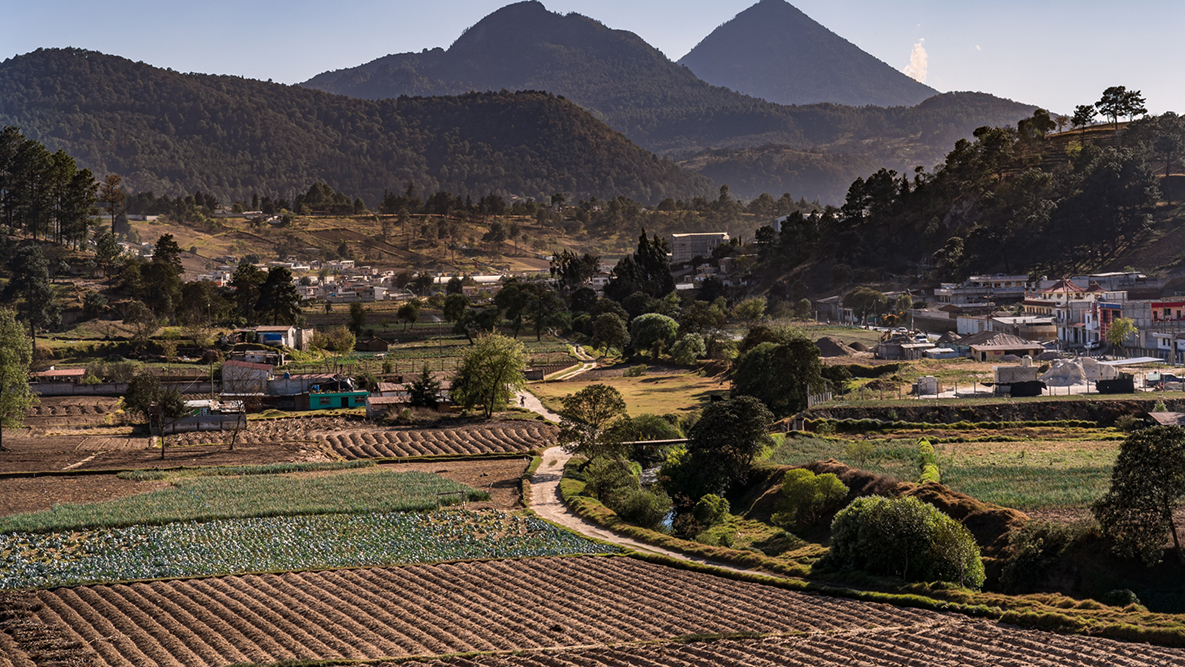
The Centers for Disease Control and Prevention (CDC) works with local and national health departments throughout the world to respond to public health threats and prevent the spread of disease regionally and globally. One of the places CDC works is Guatemala, where roughly half of the people live in rural areas. CDC works through local partners, reaching people in areas like the Department of Quetzaltenango (pictured above), where this vibrant village in rural Guatemala is located. Among the many health challenges these communities face is declining effectiveness of medicines used to treat common infections, often referred to as “antimicrobial resistance.”
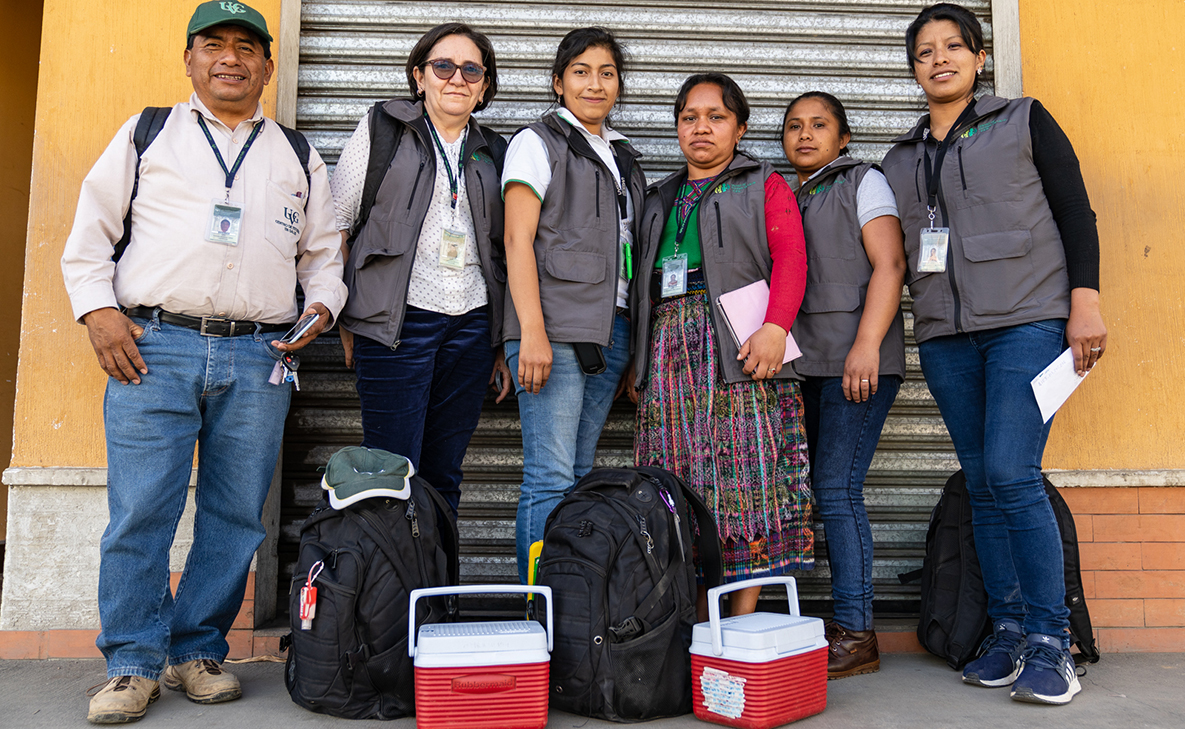
Field researchers from Universidad del Valle de Guatemala (UVG) prepare to interview households to better understand why antibiotics aren’t working effectively in the region. Understanding the factors causing antimicrobial resistance (AMR) will help improve medical treatment across the population. CDC partners with Washington State University and UVG to strengthen epidemiological surveillance for AMR in Guatemala.
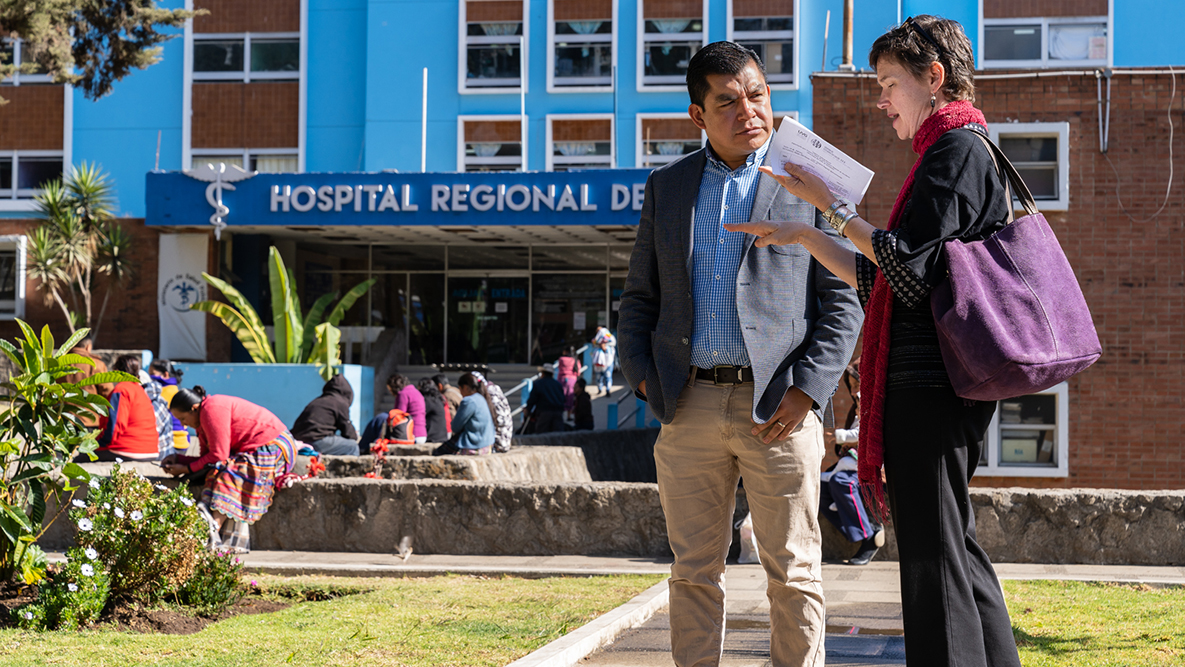
Dr. Emily Zielinski Gutiérrez, regional director of CDC’s Central America Regional office, speaks with Dr. Giovanni Ortega, the director from the Hospital Regional de Occidente in Quetzaltenango, Guatemala, about how they can use surveillance data. The CDC Central America Regional office is based in Guatemala and has collaborated with local partners in Central America since the 1960s.
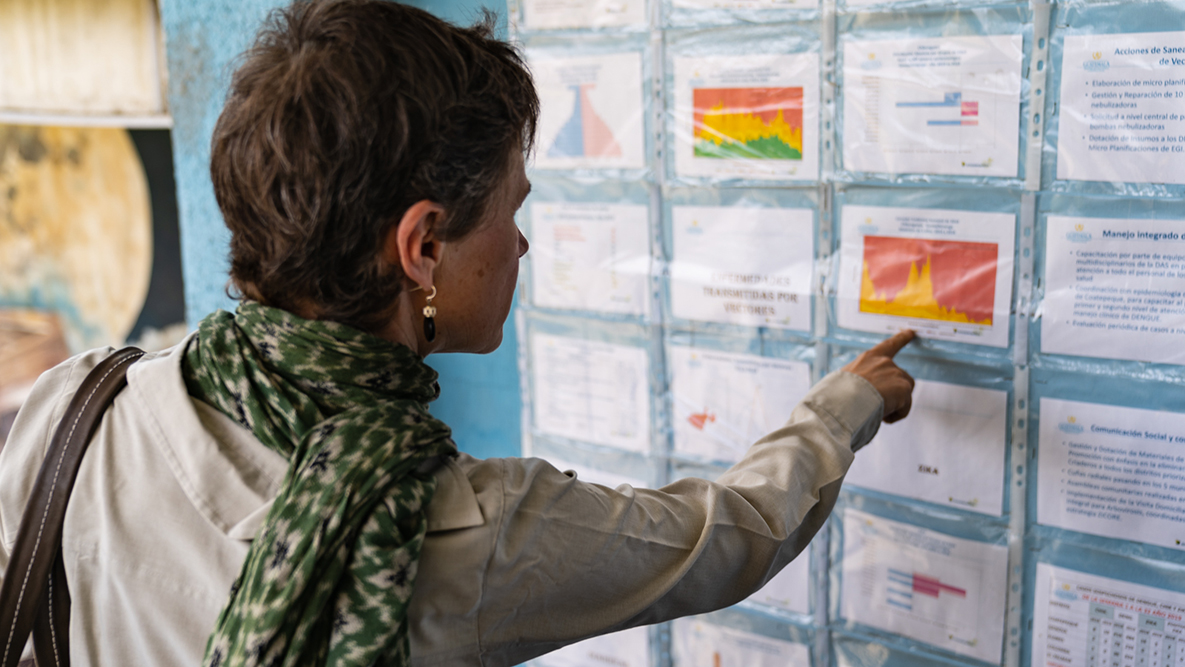
Dr. Zielinski Gutiérrez reviews epidemiological data at the local health department in Quetzaltenango, Guatemala. CDC provides technical assistance to field researchers in the area, helping to collect data to estimate the burden of antimicrobial resistance. Good data are essential to guide the decision-making process for the work of CDC and the local health department.

A member of the community welcomes Universidad del Valle de Guatemala field researchers into his home. Field researchers train for 6 weeks, 240 hours in total. Their training includes electronic device operation, survey taking, ethics, visits to health centers, and learning about the distribution of houses, clusters, and municipalities involved in the project.
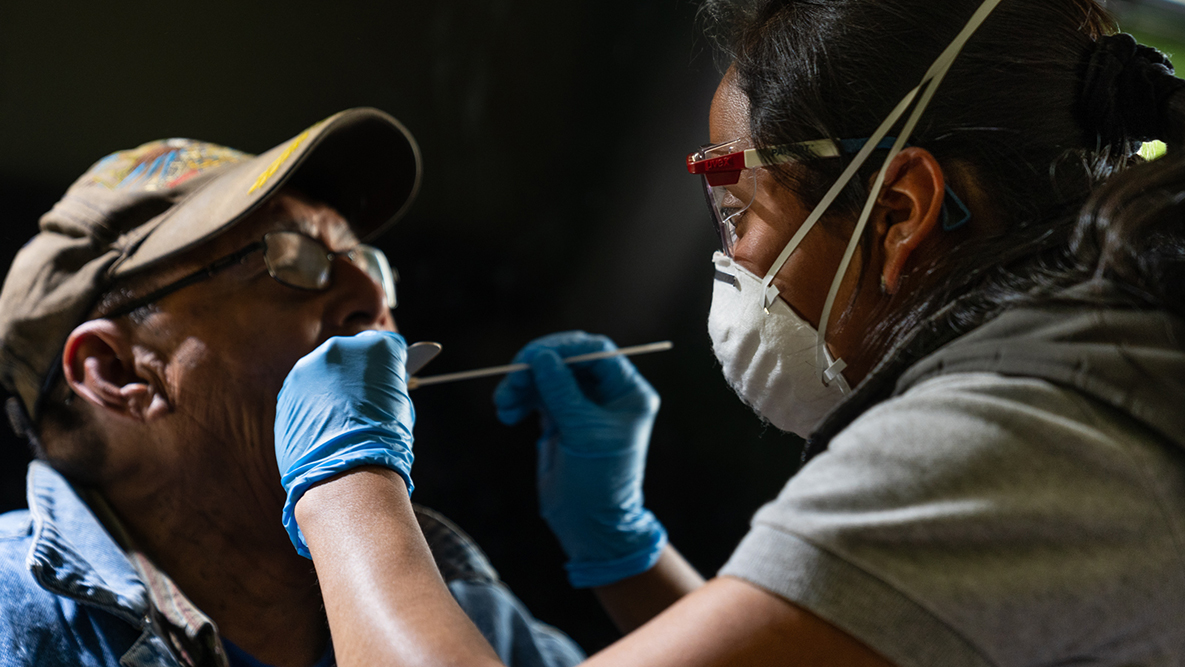
After the launch of the project on October 22, 2019, the research team led by Washington State University (WSU) and UVG started their very first collection of specimens for the study quantifying the community burden of AMR in Quetzaltenango, Guatemala. The project took a break from fieldwork when COVID-19 was detected in communities in Guatemala but looks forward to continuing when conditions are appropriate. Their efforts in Guatemala are part of a multi-partner and multi-country initiative to combat AMR around the world. Chile, Kenya, Botswana, and Bangladesh are also following the CDC developed protocol to fight AMR.
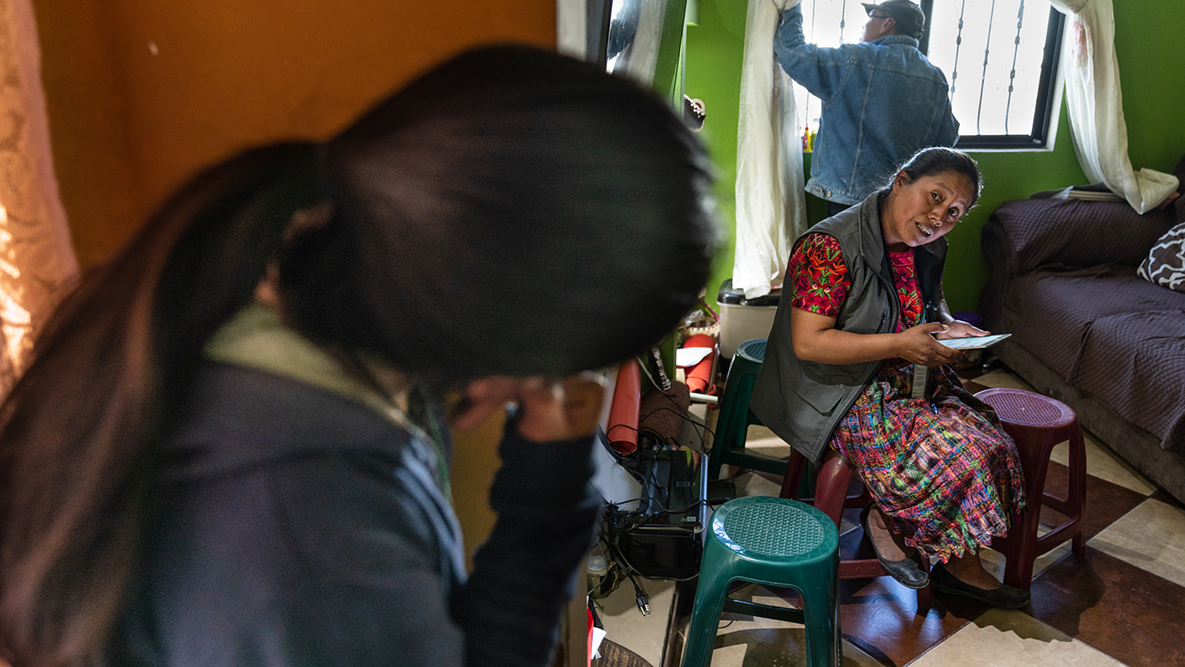
A UVG field researcher conducts a household interview for the AMR study. The day of a field researcher varies constantly. The location where field researchers work is divided into clusters. Because each cluster is so different, depending on the cluster they’re assigned to, field researchers will visit between 10 – 44 houses each day.
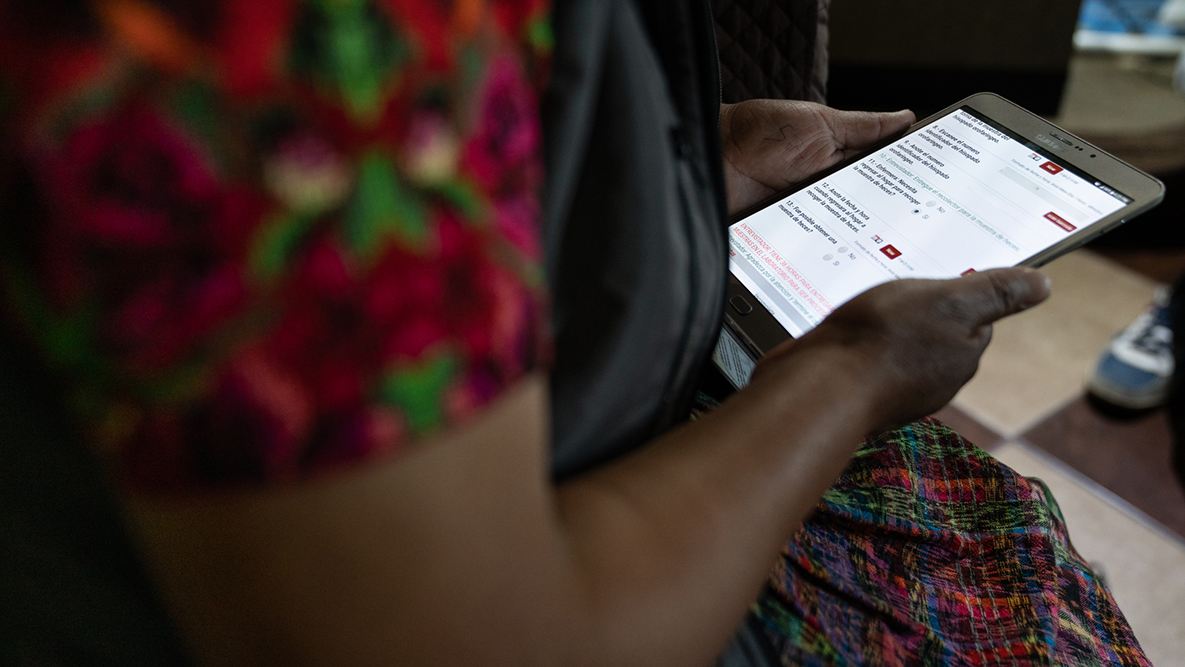
Innovative mobile data collection tools have made it easier for field researchers to conduct door-to-door interviews. Each day, the map of the target area is examined, and the researchers split off according to the workload. At the end of the day, the data from all teams is collected and checked for quality. 14 municipalities have been reached so far, and over 400 homes have enrolled in the study.

The team lead takes turns with the teams on their field work, while being remotely available for the other teams. Before the teams split off in the morning, everyone is reminded of the importance of data quality, participant confidentiality, and good data entry tips. The day usually ends with cleaning of materials and devices used in the field.
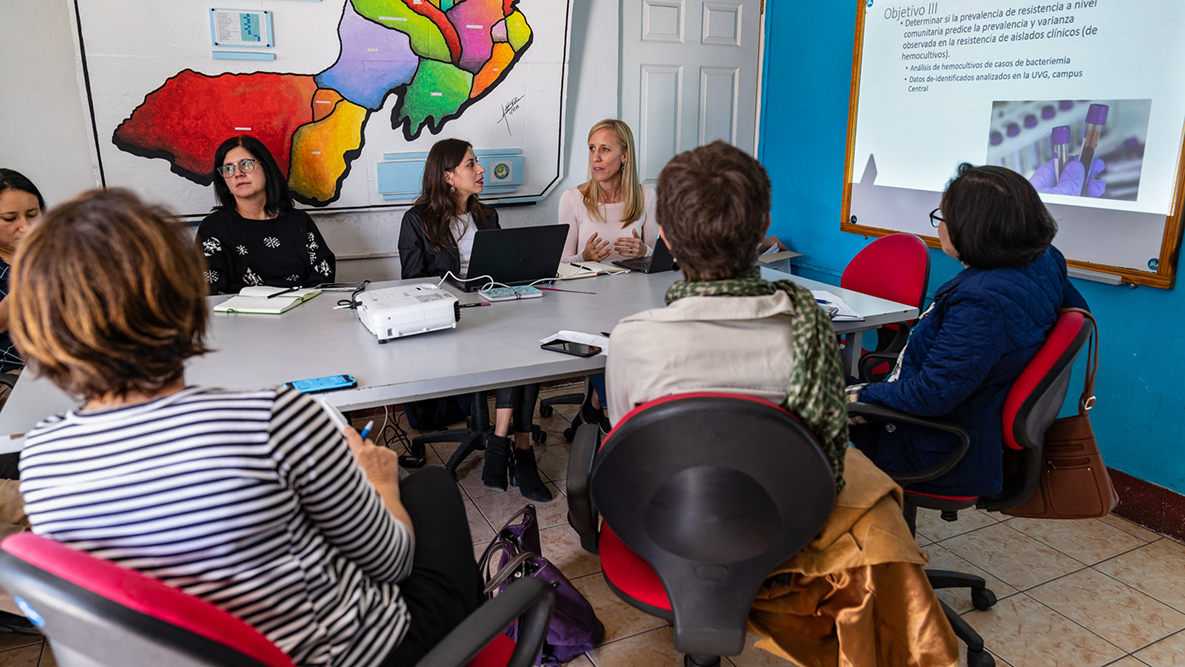
Researchers from UVG, the local health department, and CDC discuss research projects in Quetzaltenango, Guatemala. Next phases of the project in the years ahead will include a comparison of the samples collected in the homes versus at hospitals. Hospital Regional de Occidente and a second public hospital in Guatemala will be chosen, and samples will be collected from inpatient individuals. This comparison will inform researchers if the types of AMR they find in hospitals is similar to the AMR found in the homes or community.